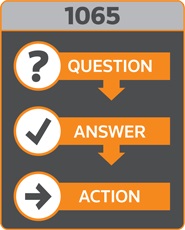We're available Monday to Friday from 8 a.m. to 6 p.m. eastern time.
Need help right now? Call 1-800-431-9025.


See also the Checkpoint Tax Preparer package, which includes the online version of this PPC deskbook.
Partnerships are a “top priority” for the Small Business/Self-Employed (SB/SE) Division, according to the SB/SE Commissioner. With PPC’s 1065 Deskbook you and your staff can solve the difficult or unclear issues encountered when preparing Form 1065. The Deskbook points out elections and other tax-saving opportunities while preparing the return; plus, the tax planning roadmap highlights planning opportunities that you and your staff can pursue after busy season.
Other tax publishers stop with interpretation and analysis, but PPC’s 1065 Deskbook features detailed examples, filled-in tax forms, and election statements that walk you through you how transactions are actually reported. The Deskbook provides:
The Deskbook includes a series of return preparation checklists, worksheets and other practice tools that promote due diligence in the preparation and review of Forms 1065 and the related schedules K-1 and K-2.